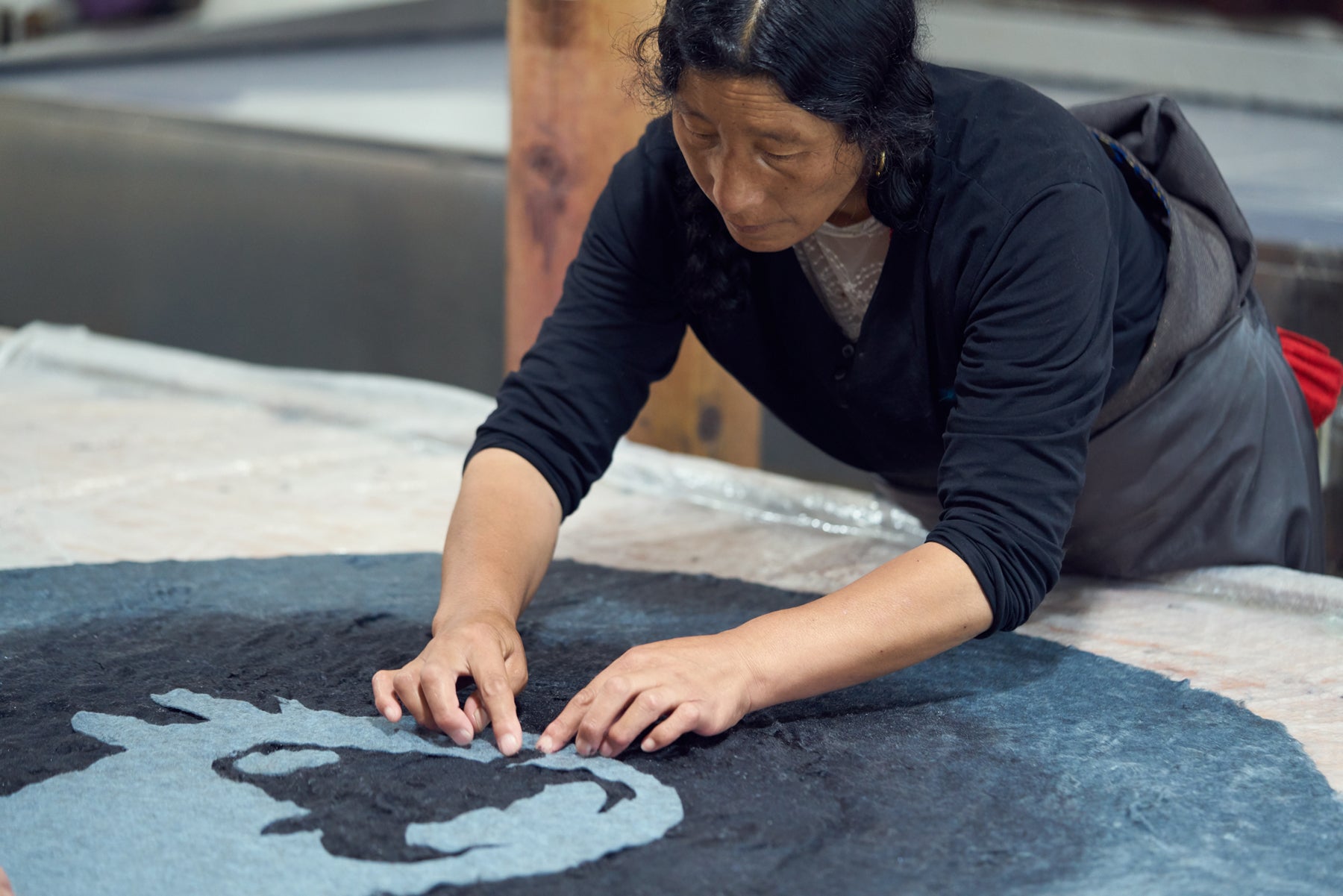Armed with a camera from her mom and flanked by a translator, Dechen Yeshi first visited Tibet in 2004 to get closer to the heritage from her father’s side. “I started to hear their stories, and I felt I could do something more,” says Dechen, who was 22 at the time. “That’s where my mother’s idea—she loves textiles—of doing something with yak wool made sense to me.”
Fast forward to today, where from the picturesque Ritoma Village, Dechen runs Norlha Textiles—the first luxury brand from what’s known to Tibetans as the Amdo region. (Her mom, Kim Yeshi, became the first investor and remains the company's president today.) Dechen and her team began producing cozy scarves once picked up by European fashion houses like Hermès and Louis Vuitton but that are now made under Norlha’s label, along with beanies, pullovers, and blankets. But Dechen didn’t just create a brand, she created a local economy: over 140 artisans power Norlha. This is how she did it.

As she settled in, Dechen noticed young adults felt “very marginalized, and they often had to leave their hometowns and go into big Chinese cities. They really wanted to be a part of the whole globalism and modernity” movement, Dechen adds. But “families were split apart, so it was important to create a source of employment to keep young people at home, so they could be with their children and their parents and then culture and tradition could be passed down.”

Living in a remote area was full of challenges initially. Ritoma lacked paved roads and plumbing as well as reliable electricity when Dechen first visited. So you could imagine what it was like starting a new business. “People thought we were kind of crazy,” Dechen says. “How are you going to make products where you have to train everybody in the village? The only thing that was from here was the raw material.”
Yet Dechen felt compelled to give it a shot. “I needed locals to see that I was here to stay,” she says. “I just felt that I was incredibly lucky to have grown up outside and had an opportunity for an education, and then being young and the combination of that—you just feel anything is possible.”

For the next few years, Dechen connected with nomads who collected wool shed by yaks, and she traveled with a few of them to Cambodia so they could all learn how to weave. “We don’t just buy the yak wool and cart it off to a factory,” she says. “That’s not what’s special about us. What we do is try to retain the added value by taking the raw material and creating employment off of it.”
Over time, Dechen turned to her new community to learn their dialect, and in turn, she’s provided English and computer classes to help employees. Her business also supports employees through an amateur basketball team—a mix of both women and men who’ve played on an international level and were the subject of a documentary film.

Around 6,000 yaks roam the Amdo region, and nomads normally collect wool in the spring after the animals shed their winter coats. Workers don’t shear or comb off the wool; instead, they wait for the yaks to naturally molt. That means Dechen’s main raw material has often been in flux and purchased in bulk once per year. But mastering the flow of supplies has helped her meet growing demand and gets her artisans paid regularly.
Above all, though, the team strives to create “fashionable” products. “We don’t want people buying from us just out of sympathy, because then they won’t come back and then it’'s not sustainable,” says Dechen. “We need to continually find our sense of identity, find our sense of style. We’re still in the teenage phase of our company identity...but we’re continually working on that.”

Today, after a decade and a half in Tibet, Dechen is now a mother of three and is looking for new growth opportunities for Norlha Textiles. She’s been hiring international interns, turning to software to better run the business, and iterating on past designs. “My dream is definitely for it to become the first high-end Tibetan brand in the world.”

Feature image by Axl Jansen
Additional reporting by Neal Hicks, Lindsey Neely, and Sam Charlton
